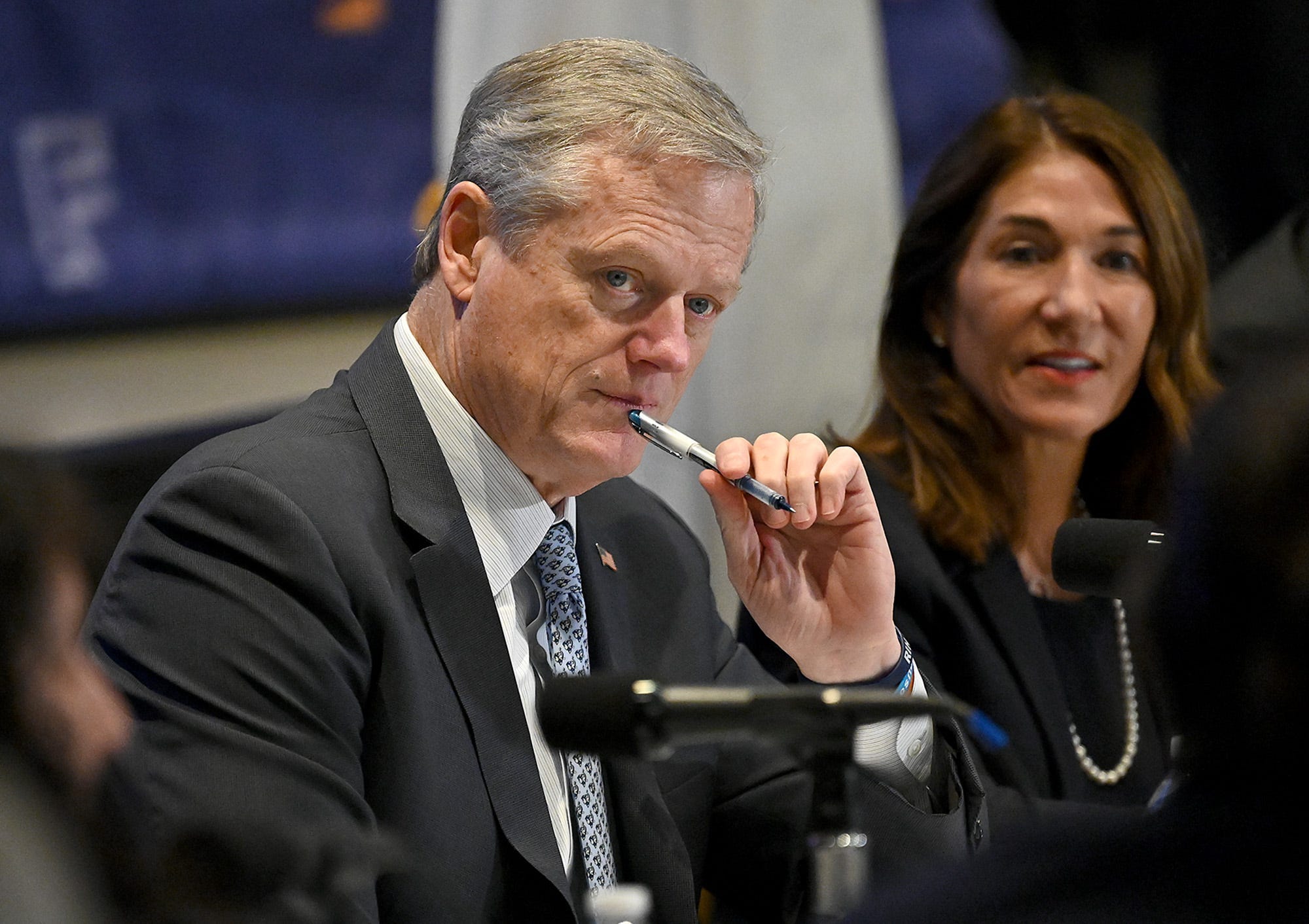New President Aims to Solve the ‘I-Don’t-Know-What’s-Going-On’ Cloud Hanging Over NCAA
For Charlie Baker, the past few months have been quite a whirlwind.
As he completed his term as Massachusetts governor, the NCAA hired him in December to replace Mark Emmert. After he was whisked around the NCAA convention in mid-January, he took off to Australia for two weeks—his first vacation with wife Lauren in more than 20 years—and then became a grandfather last week.
Through it all, Baker’s phone buzzed constantly. From school presidents to athletic directors, from coaches to college athletes and their parents, they shared a similar message with the incoming NCAA president.
“The single biggest thing I’ve heard from people through these informal calls,” he says, “was the lack of transparency, opaqueness, and the I-don’t-know-what-the-hell-is-going-on associated with NIL.”
The inescapable three-letter acronym of name, image and likeness has enveloped the college athletics landscape, evolving into an estimated billion-dollar business that is, for the most part, unregulated. The 66-year-old Baker plans to tackle the issue as one of his first moves in office, a stint that officially begins Wednesday. He wants to lift the shroud over NIL that keeps deals struck between college athletes and entities so secret.
In an interview with Sports Illustrated earlier this week, Baker called for the implementation of a system that would provide NIL transparency and protections for athletes and their families. He suggests such a system would feature details of NIL deals, including contract information that is, for now, anyone’s guess.

“I worry a lot that the system that basically does not seem to have any of the normal transparency standards you’d see in most markets, especially billion-dollar markets, is a problem. I worry about what this means for kids and families,” Baker says.
“It’s not that unusual to have a marketplace where people are expected to post prices and where people are expected to post fees and contracts,” he adds. “The fact that so many people don’t believe anything they hear from anybody in this environment at this point in time puts parents and student-athletes in a really lousy place.”
Two years ago, before the NCAA lifted its amateurism rules to allow athletes to profit from their NIL, the association geared up to create a database to collect and share NIL deals. The NCAA even selected a small group of finalists during a bidding process, but abruptly bailed on the plan because of legal concerns after the Supreme Court’s 9–0 ruling in the NCAA vs. Alston case.
Baker says he’s unsure whether his plan would be similar and declined to get into specifics until he holds more discussions with stakeholders. Any new NIL concept such as the one Baker’s suggesting would need to be approved by NCAA member schools, but he says the conversation extends well beyond the association. He expects it to be part of his conversation with congressional lawmakers in encouraging them to pass NIL legislation.
“No one really knows what the market value of any of this is,” he says. “People have been surprised by how little anybody knows about what’s going on and how much misinformation there is out there. There are plenty of ways to create a model that would solve for accountability and transparency, so that student-athletes and families would know what a market looks like and where their value sits.”
While NIL is arguably the most pressing issue within college athletics, it is hardly the only one. Baker has other goals within his first 100 days in office:
- Speak to representatives of all 100-plus NCAA conferences through Zoom.
- Hire an outside party to review the NCAA’s internal business operations to uncover strengths, weaknesses, etc.
- Push for more athlete resources around mental health. Before becoming governor in 2015, Baker worked as an executive in the health care industry. In the past few months, he has spoken to athletes with mental health crises, most of them tied to social media.
“Some of these kids told me just several stories about what happens when you miss the shot, don’t score the goal, give up the goal … people just come after them,” he says. “It’s almost all anonymous and really rough. It’s not the kind of thing that 10 years ago anybody that was a student-athlete had to deal with. Combine that with all the issues around social media generally and all the challenges that young people face overall, and I know a lot of people in the health care world who have said to me that they’d love to help with this one.”
- Strongly encourage the membership to implement some of the transformation committee’s recommendations, specifically those guaranteeing medical care to athletes two years after graduation/eligibility and the opportunity for them to return to complete their degree 10 years after eligibility expires. “I want to make those real,” he says.
But Baker isn’t naive to the fact that NIL is currently the biggest issue in college athletics. He expects to be in Washington, D.C., often, lobbying on behalf of college sports for an athlete bill that will govern NIL nationally—an argument the NCAA has repeatedly made over the past three years but has so far failed to gain any traction.
Baker says that 90% of the phone calls he has received have been centered around NIL, mostly its transparency or lack thereof.
“This is a really tough one for families,” he says. “If you end up on the wrong end of a bad deal, are you really going to go talk to anybody about it? There would be a lot of reasons not to. I did have one family say they are embarrassed about the whole thing and we are not going to talk to anybody. We should be able to do better than that.
“We need to create something that looks like a traditional market for families and student-athletes.”
Most NIL-related matters originate from Division I football’s highest orders, the FBS and Power 5 conferences. For years, some officials have called for a reorganization of the NCAA governance model, even proposing that FBS or Power 5 operate separately from the NCAA. While Baker acknowledges that Power 5 is “a completely different business model” from the rest of the NCAA, he believes the two can work under the same umbrella.
“I don’t think the fact they are different means they can’t be in the same family,” he says. “There are people who take the position that we are all the same or not and if we’re not all the same, then we’re not all in the same family. I don’t think that. … There’s a way to create a model that most of the work the NCAA does can support both.”
That said, the Power 5 is assembling its own NIL strategy. Commissioners of the five leagues gathered in Dallas earlier this month as part of a series of meetings to discuss a more strategic and unifying plan in encouraging congressional members to pass a college athlete bill. The five commissioners from the SEC, Big Ten, ACC, Big 12 and Pac-12, as well as their legislative affairs and general counsel staff members, discussed in depth their congressional strategy and message moving forward, including concessions and compromises they may make to inspire action on Capitol Hill.
Baker was part of the meeting virtually and plans to “stay close” to Power 5 commissioners on their NIL congressional approach.
“I don’t think it helps any of us to have five different strategies and approaches on this,” he says. “We need to be talking to each other regularly enough across the membership, the Power 5 and our own team so that we are all on the same page. I see no value in anything other than that.”
